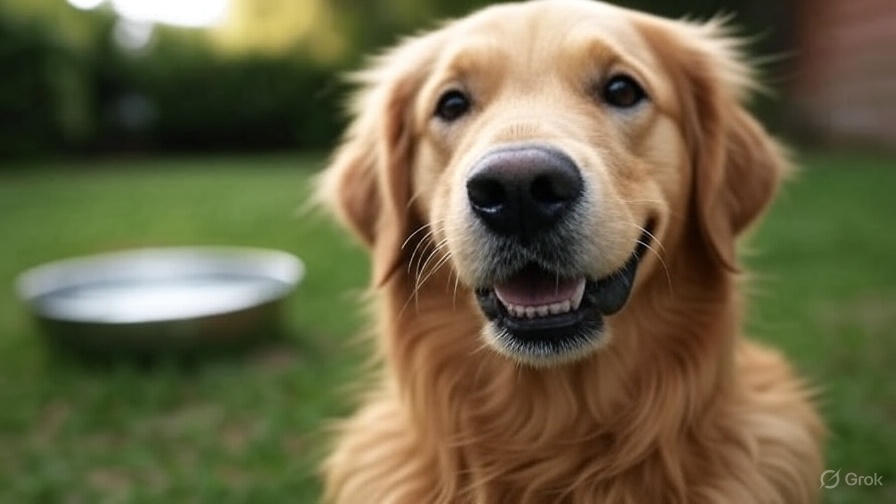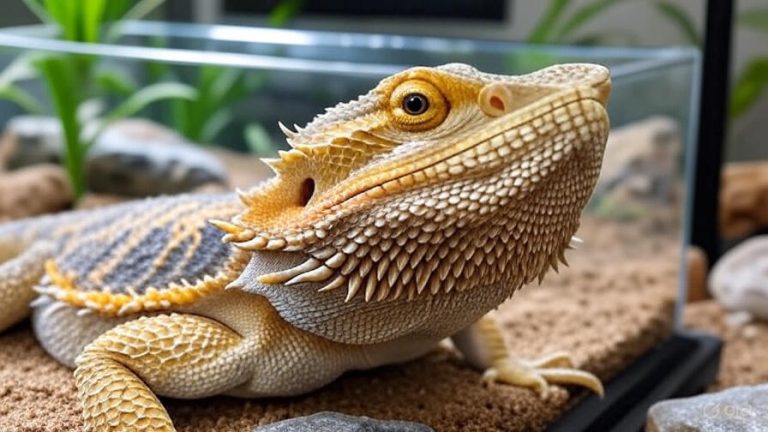How to Freshen Dog Breath?
Your beloved furry friend runs up to greet you with tail wagging and pure excitement. Then it happens – that overwhelming smell hits you like a wall. Bad dog breath doesn’t just affect your cuddle sessions; it often signals deeper health issues that need attention.
Most dog owners accept stinky breath as normal, but this couldn’t be further from the truth. Fresh breath in dogs indicates good oral health, while persistent bad breath points to problems ranging from plaque buildup to serious medical conditions.
This comprehensive guide reveals proven methods to combat dog breath naturally and effectively. You’ll discover professional techniques, home remedies, and preventive strategies that actually work.
Why Dogs Develop Bad Breath
Bad breath in dogs stems from several interconnected causes. Bacterial growth in the mouth creates the most common source of unpleasant odors. These bacteria feed on food particles stuck between teeth and along the gum line.
Plaque accumulation provides the perfect breeding ground for smell-producing bacteria. As plaque hardens into tartar, it creates rough surfaces where even more bacteria can thrive. This cycle continues until intervention breaks the pattern.
Poor oral hygiene allows bacteria to multiply unchecked. Unlike humans who brush twice daily, most dogs never receive proper dental care. Food debris remains in their mouths for hours or days, fermenting and creating foul odors.
Diet plays a crucial role in breath quality. Dogs eating low-quality food with artificial additives often develop stronger breath odors. Certain foods like fish, garlic, or onions can temporarily worsen breath smell.
Medical conditions sometimes cause persistent bad breath despite good oral care. Diabetes creates a sweet, fruity breath odor. Kidney disease produces ammonia-like smells. Liver problems generate musty odors that regular brushing cannot eliminate.
Age affects breath quality as senior dogs develop more dental issues. Worn teeth, receding gums, and slower healing create ideal conditions for bacterial overgrowth.
Professional Dental Cleaning Solutions
Veterinary dental cleaning remains the gold standard for treating severe breath problems. Professional cleanings remove tartar buildup that home care cannot address. Your vet uses specialized ultrasonic equipment to clean below the gum line where bacteria hide.
The procedure requires anesthesia to ensure thorough cleaning and prevent injury. During cleaning, your vet examines each tooth for damage, decay, or disease. They may extract severely damaged teeth that harbor persistent infection.
Professional cleanings typically cost between $300-$1,500 depending on your location and your dog’s needs. The investment pays off through improved breath, better oral health, and prevention of serious dental diseases.
Schedule professional cleanings annually for most dogs, though some breeds need more frequent treatment. Small dogs and brachycephalic breeds (flat-faced dogs) often require cleanings every six months due to crowded teeth and breathing issues.
Before the procedure, your vet performs blood work to ensure your dog can safely handle anesthesia. They’ll provide pre-operative instructions about fasting and medication schedules.
Recovery usually takes 24-48 hours. Your dog may experience mild discomfort and should eat soft foods initially. Follow-up appointments ensure proper healing and address any concerns.
Daily Brushing Techniques That Work
Regular brushing forms the foundation of good canine oral hygiene. Start slowly with short sessions to help your dog adjust to the routine. Use positive reinforcement and treats to create pleasant associations with brushing time.
Choose a dog-specific toothbrush with soft bristles sized appropriately for your pet’s mouth. Human toothbrushes work in emergencies but aren’t designed for canine mouth shapes. Finger brushes offer better control for nervous dogs or difficult angles.
Never use human toothpaste, which contains xylitol and fluoride that are toxic to dogs. Dog toothpaste comes in flavors like chicken, beef, or peanut butter that most dogs enjoy. Some enzymatic toothpastes continue working even after brushing ends.
Begin by letting your dog smell and taste the toothpaste. Lift their lips gently and touch their teeth with your finger. Gradually introduce the toothbrush, starting with just a few teeth before working up to full sessions.
Focus on the outer surfaces of teeth where plaque typically accumulates. Brush in gentle circular motions along the gum line. Don’t worry about brushing inside surfaces – your dog’s tongue naturally cleans those areas.
Aim for daily brushing, but even three times per week provides significant benefits. Consistency matters more than duration. Short, regular sessions work better than lengthy, stressful battles.
Natural Home Remedies for Fresh Breath
Several natural ingredients safely freshen dog breath when used correctly. These remedies complement regular brushing but shouldn’t replace professional care for severe problems.
Raw carrots provide natural abrasion that helps scrape away plaque. The chewing action stimulates saliva production, which naturally rinses the mouth. Cut carrots into appropriate sizes to prevent choking hazards.
Apple cider vinegar added to drinking water creates an environment hostile to harmful bacteria. Use only raw, unfiltered vinegar and start with small amounts – one teaspoon per bowl of water. Some dogs dislike the taste, so introduce gradually.
Coconut oil contains lauric acid, which fights bacteria naturally. Start with small amounts (1/4 teaspoon for small dogs, 1 teaspoon for large dogs) to avoid digestive upset. Many dogs enjoy the taste and will lick it directly from a spoon.
Fresh parsley acts as a natural breath freshener and provides vitamins. Chop small amounts and sprinkle over food. Avoid parsley in large quantities, as excessive amounts can cause health issues.
Plain yogurt with live cultures introduces beneficial bacteria that compete with odor-causing microorganisms. Use unsweetened, unflavored yogurt without artificial sweeteners. Start with small amounts to assess your dog’s tolerance.
Bone broth made from beef or chicken bones provides nutrients while encouraging drinking. The additional liquid helps flush away food particles and bacteria. Ensure bones are removed before serving to prevent choking.

Dental Treats and Chews That Actually Help
Not all dental treats deliver on their promises. Look for products approved by the Veterinary Oral Health Council (VOHC), which tests treats for actual plaque and tartar reduction.
Raw bones provide natural cleaning action but require careful supervision. Choose size-appropriate bones that won’t splinter or break teeth. Never give cooked bones, which become brittle and dangerous.
Rope toys with thick fibers help scrape teeth during play. Replace toys when they become frayed to prevent ingestion of loose threads. Supervise chewing sessions to ensure safe use.
Puzzle toys that dispense treats encourage extended chewing while providing mental stimulation. The prolonged contact helps clean teeth naturally while keeping dogs engaged.
Dental chews specifically designed for breath freshening often contain ingredients like chlorophyll or mint. Read labels carefully to avoid artificial additives that might upset sensitive stomachs.
Bully sticks and similar natural chews provide long-lasting cleaning action. Choose products from reputable manufacturers that test for harmful bacteria. Monitor consumption to prevent digestive issues from overconsumption.
Diet Changes for Better Oral Health
What your dog eats directly impacts breath quality and overall oral health. High-quality proteins and natural ingredients support better breath than processed foods with artificial additives.
Dry kibble provides more abrasive action than wet food, helping scrape away plaque during eating. However, food quality matters more than texture. Premium wet food beats low-quality dry food for overall health benefits.
Avoid foods high in sugar or simple carbohydrates, which feed harmful bacteria. Many commercial treats contain corn syrup or other sweeteners that worsen breath problems.
Raw diets often improve breath quality due to natural enzymes and reduced processing. However, raw feeding requires careful planning to ensure nutritional balance and food safety. Consult your veterinarian before making dramatic dietary changes.
Probiotics support healthy oral bacteria balance. Look for dog-specific probiotic supplements or foods with added beneficial cultures. Start slowly to allow your dog’s system to adjust.
Fresh water access remains crucial for oral health. Change water daily and clean bowls regularly to prevent bacterial growth. Some dogs prefer running water from fountains, which may encourage increased consumption.
When to Consult Your Veterinarian
Some breath problems require professional medical attention beyond basic dental care. Sudden changes in breath odor often indicate developing health issues that need prompt evaluation.
Extremely sweet or fruity breath may signal diabetes, especially combined with increased thirst and urination. This serious condition requires immediate veterinary care and ongoing management.
Ammonia-scented breath suggests possible kidney problems. Other signs include changes in appetite, energy levels, or bathroom habits. Early detection improves treatment outcomes significantly.
Breath that smells like urine indicates potential kidney disease or blockages. Don’t delay seeking professional help, as these conditions can become life-threatening quickly.
Persistent bad breath despite good oral care may indicate deeper infections or systemic diseases. Your vet can perform diagnostic tests to identify underlying causes.
Yellow or brown teeth, red or swollen gums, and reluctance to eat hard foods suggest advanced dental disease requiring professional treatment. Home care alone cannot reverse severe dental problems.
Long-Term Prevention Strategies
Preventing bad breath proves easier and less expensive than treating established problems. Start good habits early and maintain consistency throughout your dog’s life.
Establish daily oral care routines during puppyhood when dogs adapt more easily to new experiences. Adult dogs can learn to accept brushing, but patience and positive reinforcement become even more important.
Schedule regular veterinary checkups that include oral health assessments. Early detection of problems allows for less invasive and less expensive treatments.
Monitor your dog’s breath regularly to notice changes quickly. Gradual worsening may not seem alarming, but documenting changes helps your vet identify patterns and potential problems.
Feed high-quality food appropriate for your dog’s age, size, and health status. Cheap food often leads to expensive health problems later, including dental disease.
Provide appropriate chewing opportunities through safe toys and treats. Mental stimulation through puzzle feeders and training also contributes to overall health and happiness.
Conclusion
Fresh breath in dogs reflects good health and proper care. While some odor is normal, persistent bad breath usually indicates problems that respond well to appropriate treatment.
Start with basic home care including regular brushing, appropriate diet, and safe chewing opportunities. These simple steps prevent most breath problems and support overall oral health.
Don’t ignore sudden changes in breath quality or signs of dental disease. Early intervention saves money and prevents painful conditions that affect your dog’s quality of life.
Professional dental cleanings remain necessary for most dogs, but good home care extends the time between procedures and maintains better health overall.
Your dog depends on you for proper oral health care. With consistent effort and appropriate professional support, you can keep your furry friend’s breath fresh and their mouth healthy for years to come. The reward of pleasant puppy kisses and better health makes the effort worthwhile for both of you.







